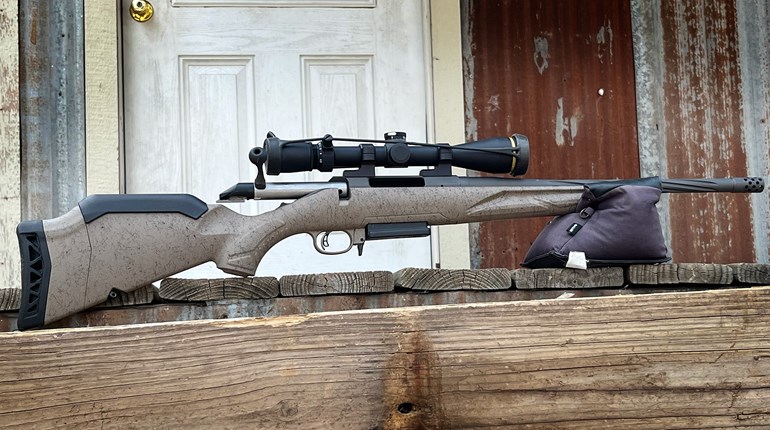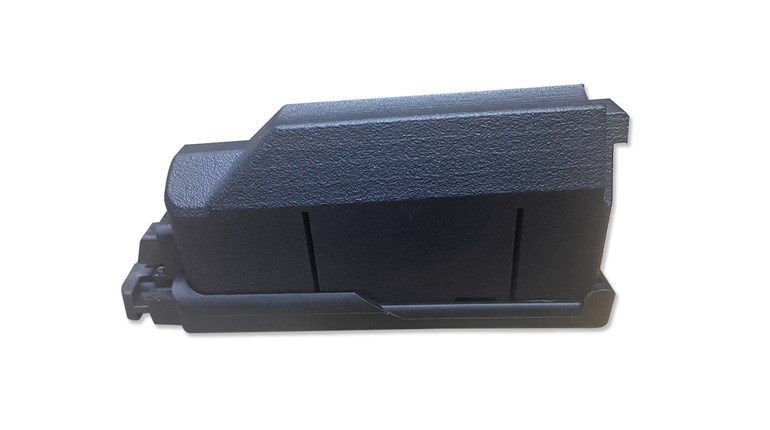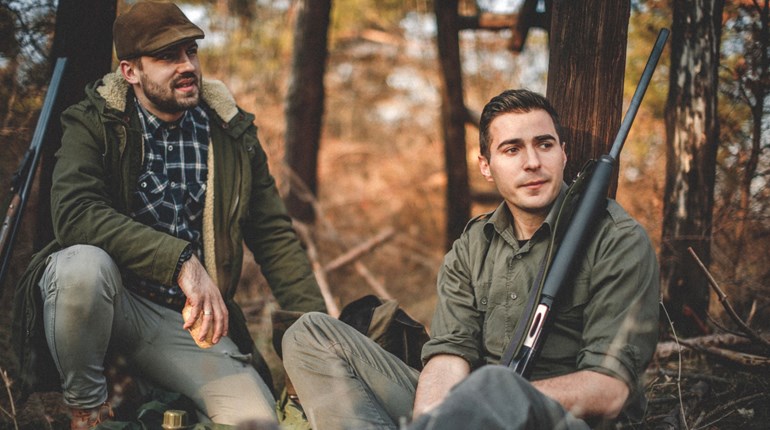Are you good enough? This is the question that runs through my mind when I consider hunting a mature buck while the canopy is still up and bright and the rut’s madness is still weeks away. To kill a good buck in October you need to get in on the right wind to an ambush spot between a buck’s bedding and feeding area—where he’ll be on his feet in shooting light. And you must be able to slip away again undetected after dark. The risk has to be worth the gamble. It can be foolish to bump bucks now that will be more vulnerable in a few weeks. The bucks are now moving in the deepening dusk to feed on white oak acorns, persimmons, crab apples and later perhaps in a farmer’s fields. They’re predictable but sly. What you do now depends on how good you are and the strength of your setup and exit routes. It means tossing away some stands, because you may never know if you bumped a buck or not.
The Entry
Can you sneak to a setup, often in the thickest woods, to where a particular buck will stage in the evening? Do you have a ditch, logging road, swamp edge or some pathway to get in there and out without blowing deer? Is it okay to burn this spot? These are important questions you ask after you’ve figured where the buck is generally bedding and what food source is drawing him in the evening. Now you need to get in without the wind going into his bedding area and without bumping other deer that might blow off and tell him about you.
Bucks learn about us quickly. Auburn University researcher Clint McCoy used GPS collars on 37 bucks across three hunting seasons in South Carolina. He found that during the season the average distance adult bucks shifted to avoid hunting stand sites was just 55 yards. This is a little more scientific proof that bucks don’t necessarily vacate an area after being bumped. They just move less in daylight and shift their patterns to avoid you. To up your odds, you also have to be mobile—even if you shift only 100 yards.
But all that’s ahead of you. Right now it’s time for your first moves. You should have already glassed likely fields at dusk and maybe used trail cameras. You’re likely relying on past experience on a property and perhaps on late-summer sightings from others. You should’ve been careful with the cameras. Some hunters get too greedy with their cameras. They leave scent behind and bump deer before the season even starts.
If you’re not sure about making this early move, consider taking an observation stand in the morning—somewhere high up and out of the action. This way you can watch the deer leave the fields and see where they go to bed.
The Telltale Sign
It’s time to move when a pattern emerges from photos or sightings of a good buck in October during daylight. Many mature bucks won’t step into the open in October until after sunset. If you’ve found a good buck going to a food source in daylight then that’s a buck you should target now if you have that sneaky way in and out.
Step into the tree line and go back slowly with rubber boots on and the wind in your face. Be careful what you touch as you look for clusters of fresh rubs. Rubs are often made in “staging areas” by bucks waiting for dark. Look for those secondary points coming off a ridge as you search for a stand site off the bottom that’ll give you a predictable wind. As you do, keep looking for that entry/exit route—the setup’s not good without one.
Also, often a buck in the pre-rut will work a rub line in the morning. A rub line is one of the few places worth hunting in the morning now. Stay out of the fields and other feeding areas and get to a rub-line stand while it is still midnight dark. The wind can’t be variable. If the temperature has dropped or is dropping as a front comes in and the wind is stable then the conditions are ideal.
The Exit
If you plan to come back then you need an exit strategy. The last minutes of legal shooting time are when things often happen in October. So how are you going to get out without spooking deer? If you’re on or near the edge of a crop field, you might be able to have a buddy pick you up in a vehicle or tractor. Deer are likely used to seeing and hearing farm equipment. Bumping them this way likely won’t make them go nocturnal—at least the first time or two.
If there is no cliff edge, ditch or stream to use to slip away, sometimes you just need to burn some spots. I’ll often take a climbing stand into places I rarely hunt because they’re so impossible. I go in on favorable winds, find the rubs and cut a shooting lane if absolutely necessary. As I do I’m fully aware that I’ll bust the area when I climb down and go. Deer hunting is a gamble and sometimes you need to bet the pot to win. The thing is knowing you did lose and need to go somewhere else next time. I don’t do that with my best rut pinch points. I have learned it’s easy to be too reckless, but that it’s also easy to be too careful. Hunting well is finding options and playing those hands when the odds are best.
■ Build Your Skills Other Killer Early-Season Tactics
Corn Row a Buck: Deer will bed in standing corn. Until the corn is harvested they’ll bed there away from the bugs breeding in the riparian areas. You can stalk through the corn by peeking into a row at a time. You can also linger two or three rows in beside a field of alfalfa or another crop in which you know deer are feeding. When a buck emerges from the corn, use the corn to slip within bow range.
Glass for Acorns: White oak acorns are what a lot of deer fatten up on. To find the best stands before the season, use a binocular to look up into the oaks. You’ll soon find that some trees and groves are riper than others.
Bug Out at a Waterhole: In the early season, sometimes a smart place to be is where a buck will take an evening drink. Some areas are crisscrossed by streams and dotted with ponds, but others are not. Muddy banks will quickly show if deer are using a spot. Just don’t forget your ThermaCell or other mosquito repellent.





































